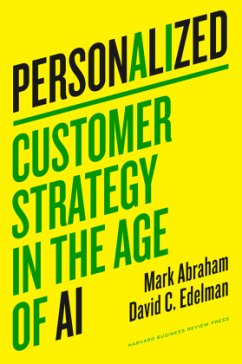
The Growth Dilemma
Managing Your Brand When Different Customers Want Different Things

PAYBACK Punkte
11 °P sammeln!
Porsches for soccer moms? Finance bros in Patagonia? Drive-through Starbucks? What happens when your growth strategy creates conflict between customers?You always want to grow your brand, but there's a dilemma: the more customer segments you target, the harder it becomes to avoid conflict between them. Sometimes attempts to court new customers can feel like a betrayal to your loyal base. Sometimes new customer segments rush to adopt your products and in the process unwittingly alienate your existing customers. And sometimes your growth strategy flies in the face of what your customers have dec...
Porsches for soccer moms? Finance bros in Patagonia? Drive-through Starbucks? What happens when your growth strategy creates conflict between customers?
You always want to grow your brand, but there's a dilemma: the more customer segments you target, the harder it becomes to avoid conflict between them. Sometimes attempts to court new customers can feel like a betrayal to your loyal base. Sometimes new customer segments rush to adopt your products and in the process unwittingly alienate your existing customers. And sometimes your growth strategy flies in the face of what your customers have decided your brand means to them.
Brands must navigate these incompatibilities in order to achieve sustainable growth-or face losing more customers than they gain. Marketing experts and professors Annie Wilson and Ryan Hamilton show you how to manage this challenge with a fresh, simple framework for growing without imploding, helping you choose whom to target, how to avoid conflict between segments, and, crucially, what to do when the sensibilities of one segment clash with those of another.
Wilson and Hamilton illustrate their framework with dozens of real-world cases. How did Supreme lose its coveted reputation among skateboarders? How did a software update cost Apple a devoted customer base? What did Gucci do when the cast of Jersey Shore started toting its handbags around? And why are Crocs even a thing?
With depth, clarity, and a bit of humor, Wilson and Hamilton give you a better way to strategically select new target markets and manage multiple customer segments. The Growth Dilemma is your road map to brand growth.
You always want to grow your brand, but there's a dilemma: the more customer segments you target, the harder it becomes to avoid conflict between them. Sometimes attempts to court new customers can feel like a betrayal to your loyal base. Sometimes new customer segments rush to adopt your products and in the process unwittingly alienate your existing customers. And sometimes your growth strategy flies in the face of what your customers have decided your brand means to them.
Brands must navigate these incompatibilities in order to achieve sustainable growth-or face losing more customers than they gain. Marketing experts and professors Annie Wilson and Ryan Hamilton show you how to manage this challenge with a fresh, simple framework for growing without imploding, helping you choose whom to target, how to avoid conflict between segments, and, crucially, what to do when the sensibilities of one segment clash with those of another.
Wilson and Hamilton illustrate their framework with dozens of real-world cases. How did Supreme lose its coveted reputation among skateboarders? How did a software update cost Apple a devoted customer base? What did Gucci do when the cast of Jersey Shore started toting its handbags around? And why are Crocs even a thing?
With depth, clarity, and a bit of humor, Wilson and Hamilton give you a better way to strategically select new target markets and manage multiple customer segments. The Growth Dilemma is your road map to brand growth.













